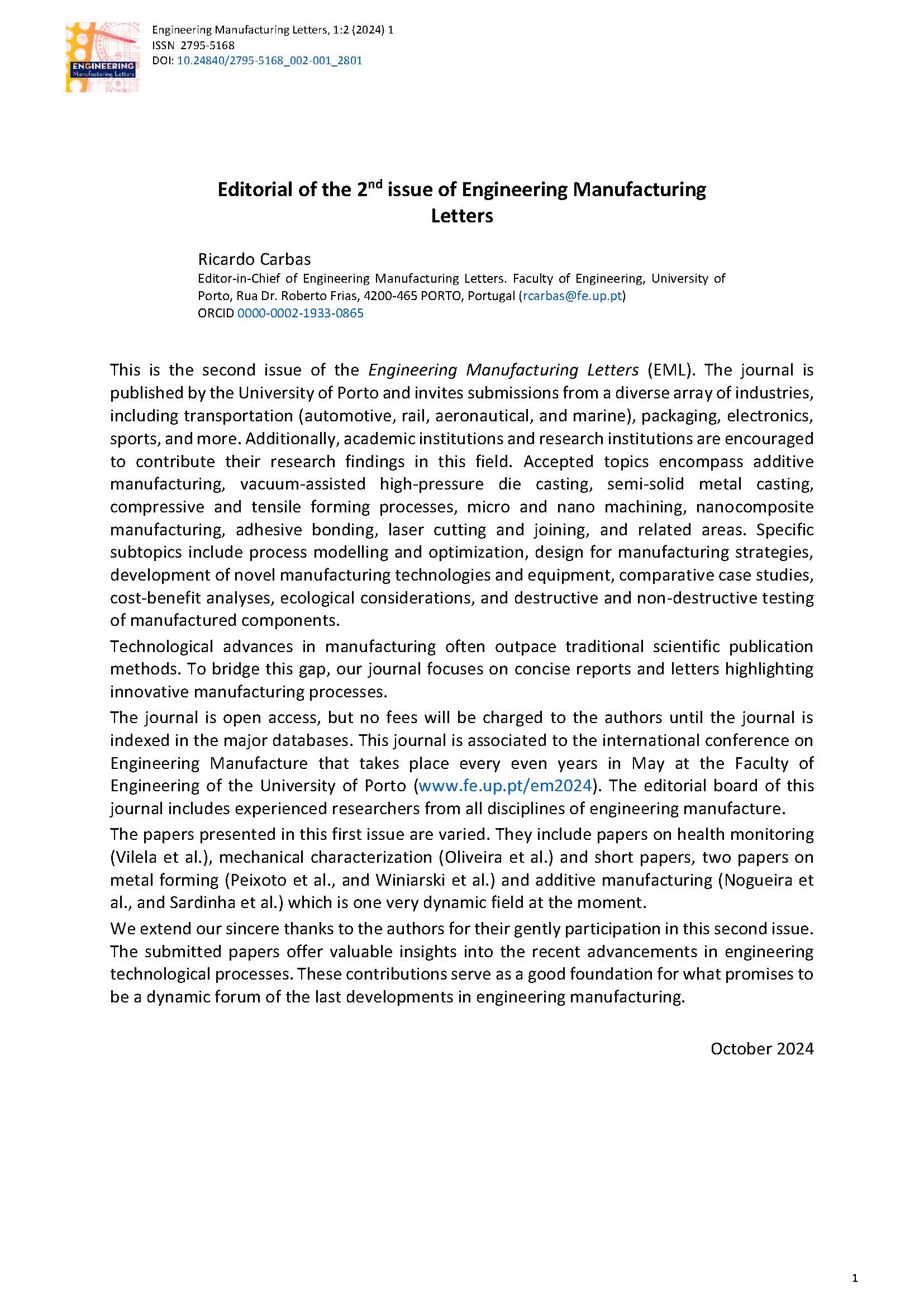Editorial of the 2nd issue of Engineering Manufacturing Letters
Main Article Content
Abstract
This is the second issue of the Engineering Manufacturing Letters (EML). The journal is published by the University of Porto and invites submissions from a diverse array of industries, including transportation (automotive, rail, aeronautical, and marine), packaging, electronics, sports, and more. Additionally, academic institutions and research institutions are encouraged to contribute their research findings in this field. Accepted topics encompass additive manufacturing, vacuum-assisted high-pressure die casting, semi-solid metal casting, compressive and tensile forming processes, micro and nano machining, nanocomposite manufacturing, adhesive bonding, laser cutting and joining, and related areas. Specific subtopics include process modelling and optimization, design for manufacturing strategies, development of novel manufacturing technologies and equipment, comparative case studies, cost-benefit analyses, ecological considerations, and destructive and non-destructive testing of manufactured components.
Technological advances in manufacturing often outpace traditional scientific publication methods. To bridge this gap, our journal focuses on concise reports and letters highlighting innovative manufacturing processes.
The journal is open access, but no fees will be charged to the authors until the journal is indexed in the major databases. This journal is associated to the international conference on Engineering Manufacture that takes place every even years in May at the Faculty of Engineering of the University of Porto (www.fe.up.pt/em2024). The editorial board of this journal includes experienced researchers from all disciplines of engineering manufacture.
The papers presented in this first issue are varied. They include papers on health monitoring (Vilela et al.), mechanical characterization (Oliveira et al.) and short papers, two papers on metal forming (Peixoto et al., and Winiarski et al.) and additive manufacturing (Nogueira et al., and Sardinha et al.) which is one very dynamic field at the moment.
We extend our sincere thanks to the authors for their gently participation in this second issue. The submitted papers offer valuable insights into the recent advancements in engineering technological processes. These contributions serve as a good foundation for what promises to be a dynamic forum of the last developments in engineering manufacturing.
Article Details

This work is licensed under a Creative Commons Attribution 4.0 International License.

